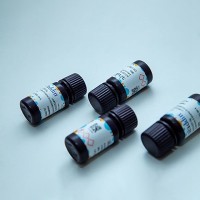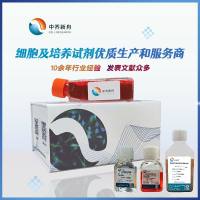Fluorescence Labeling of Surface Antigens of Attached or Suspended Tissue-Culture Cells
互联网
479
The surfaces of living cells contain a wide variety of molecular species that are characteristic of the type and physiological role of the cell. These surface molecules mediate cell-recognition events, receptorligand interactions and hormonal signaling events, surface homeostasis and transport regulation, attachment to surrounding structures, and a host of other physiologically vital functions. The types of surface molecules present include integral, as well as peripheral elements, and include proteins, carbohydrate moieties, and lipids. The number of each molecular species that serves a physiological function can vary from only a few hundred molecules per cell on the surface to many millions of molecules per cell. The unique nature of many of these molecules was recognized early in the development of immunologic techniques for cell identification, and this serves as the basis for many highly useful diagnostic tools in clinical medicine. The identification of surface antigenic molecules using antibodies can be performed by several methods, including immunofluorescence microscopy, enzyme and discrete marker microscopy, enzyme and radioactive labeling of mass cultures, and flow cytometry using fluorescence dyes. In this chapter, methods will be described that concentrate on the immunofluorescence microscopy approach to surface antigen identification in cultured cells (1 ,2 ).









